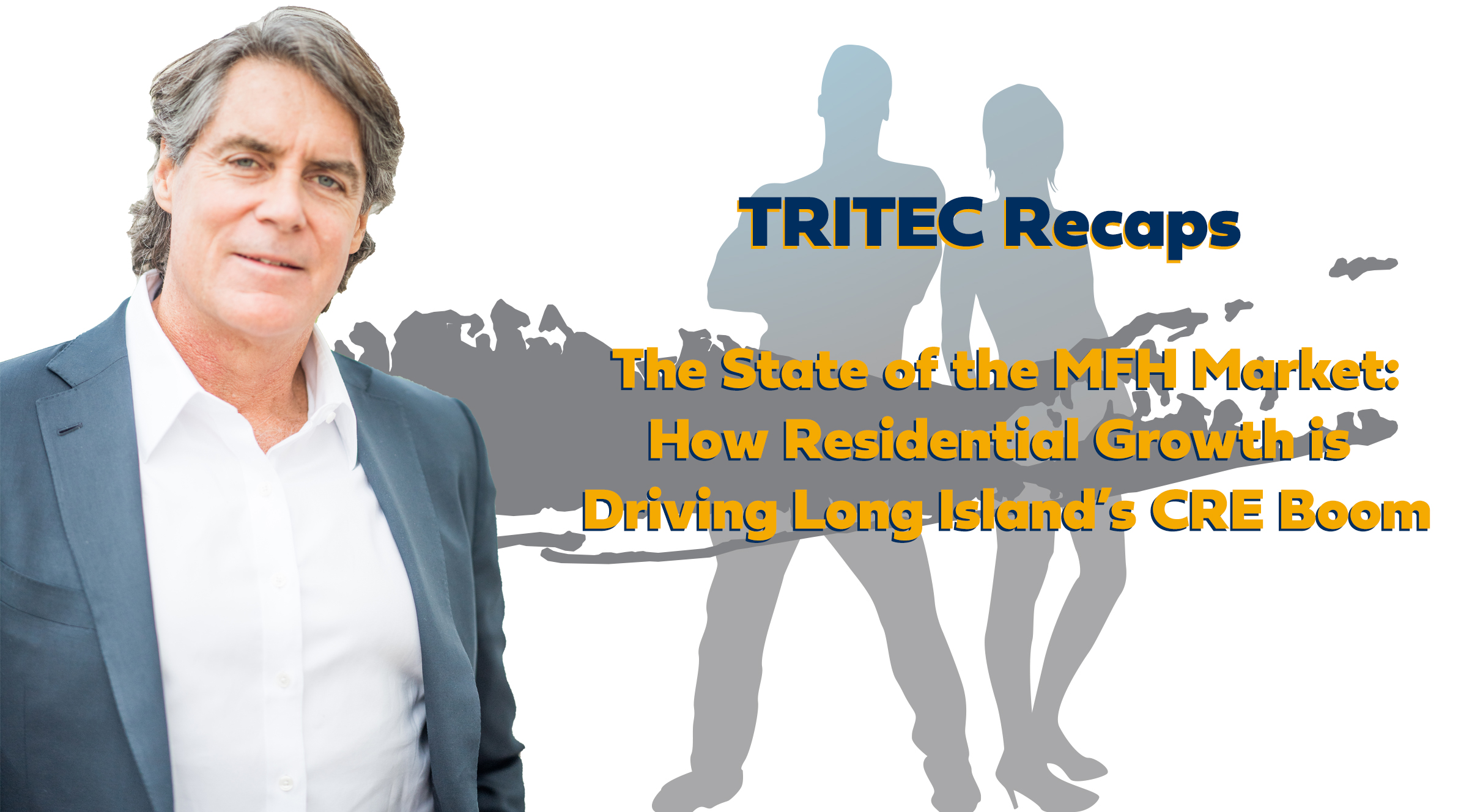- Development
- Tritec News
Growth in Secondary Markets: A Boom in Real Estate Activity on Long Island
The Commercial Observer Corporate Relocation Series recently led a program focused on emerging opportunities and new catalysts of real estate growth in the Long Island submarket. The event included two panels moderated by Marc Fogel and Nicole Barthelemy, Partner and Principal (respectively) at Berdon LLP, and speakers such as Lawrence Levy, Executive Dean Association Vice President for the National Center for Suburban Studies at Hofstra University, Michael Maturo, President of RXR Realty, Philip Heilpern, Senior Vice President at CBRE, and TRITEC Principal Robert Coughlan.
The event discussed the trend towards de-urbanization of our workforce – a trend which started long before the coronavirus pandemic. With advanced technology enabling virtual meetings, and flexible work options gaining traction among younger cohorts and working parents, suburbs around the country were seeing greater interest from renters and buyers alike. In the New York metro area specifically, millennials and Gen Z-ers were increasingly priced out of expensive Manhattan real estate, and have gradually expanded their searches for apartments and homes into Long Island and New Jersey markets. When the COVID-19 pandemic hit, these trends accelerated as individuals and families sought out more green space, less dense areas to live and shop, and had even more freedom to work from home.
In the first panel, Lawrence Levy and Michael Maturo discussed how the pandemic caused people to be more weary about some city features – like elevators and subways – and how the suburbs offered a renewed sense of control for some.
Maturo said, “I think it has a lot to do with people’s comfort level, in terms of controlling their environment, health and wellness issues – and not having to get on a train, go into the city and potentially get onto the subway.”
They also talked about Long Island’s need for greater infrastructure and how hybrid work models, updated office layouts and cleaning needs will lead to more amentized spaces necessary for commercial growth. Levy also called out new innovative planning strategies that played out within downtowns like Greenport, where they found unlikely growth by replacing parking spaces with more walkable and retail street space.
On the second panel, speakers honed in on transit-oriented projects and the role of downtown revitalization in retaining talent and attracting industry.
Robert Coughlan, Principal and Founder of TRITEC discussed the increase of companies considering the move from industrial spaces to downtown areas, because it provides employees with better work environments. He offered context around Long Island’s zoning laws which, for a time, necessitated distinct areas for residential, commercial and retail space. Over the last decade or so, as millennials have started relocating to the suburbs looking for walkable downtowns, and babyboomers have sought to downsize from single family homes, there has been a return to more fluid zoning.
According to Coughlan, when mixed use developments include commercial, retail and residential space they support each other, and often lead to thriving neighborhoods. He said, “All of these uses, they tend to work together, restaurants and stores help to attract office tenants and residential space attracts and can help retain talent. Office tenants provide a daytime population to support the retail during the work week, and residential tenants support the retail on the evenings and weekends.”
Coughlan also touched on the Ronkonkoma Hub project which is now underway in Suffolk County, and the importance of creating collaborative relationships between developers and communities. He talked about how the pandemic did change some planned retail for the Hub, which was originally focused on entertainment style retail, but will now be more geared toward an authentic community needs and destinations – like a grocery store, pharmacy, restaurants and more.
He said, “One of our mantras is to ‘Do well while doing good’ because we want to be a catalyst for positive change.” He spoke about how community support for a project helps create a more vibrant sustainable neighborhood where tenants like to be and want to stay long-term. “Before committing to an area or a project we want to know that we are wanted there. In the long run its not only the right thing to do, but it’s a good business strategy.”
Overall panelists concluded that the Long Island market is in good shape. There is work to do in embracing new strategies around downtowns and much-needed cooperation when it comes to deploying federal recovery funds in ways that reinvigorate Long Island’s local economies – but all are optimistic and believe our region has a lot of potential for growth.
To watch the full event, visit: https://www.facebook.com/1394127670826744/videos/459775681987020

